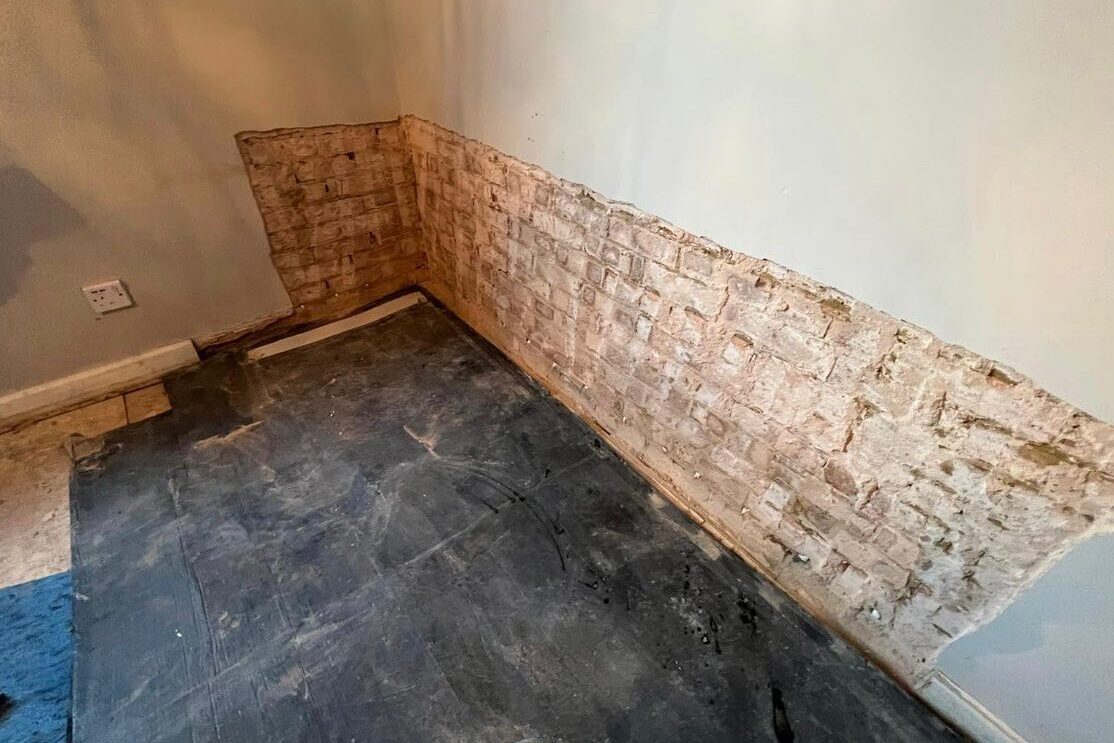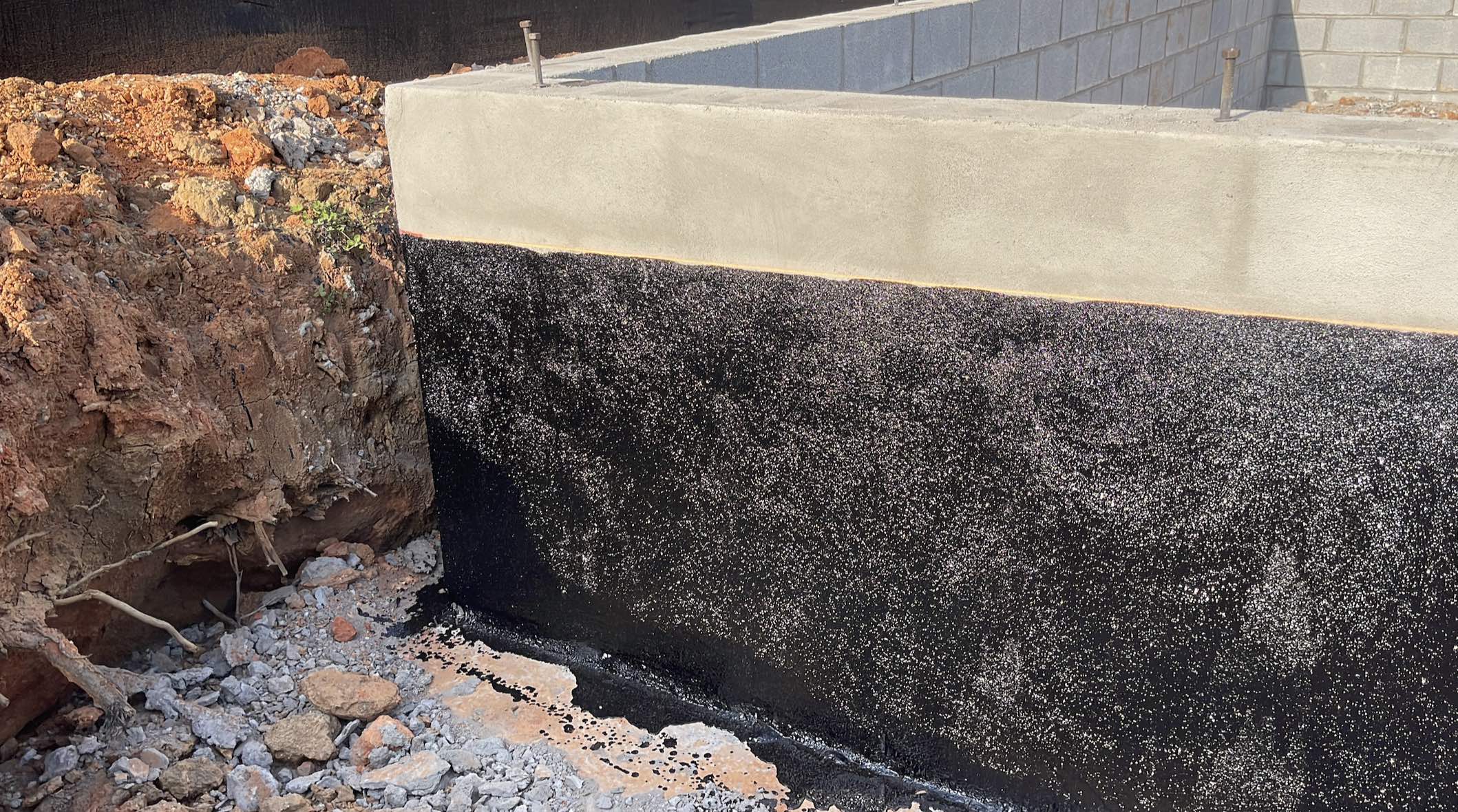Checking Out the Numerous Methods and Solutions for Effective Damp Proofing
Wetness in buildings poses substantial obstacles to both architectural honesty and interior air high quality. Various techniques and solutions have actually arised to battle this prevalent concern. From conventional damp-proof membranes to innovative chemical therapies, each approach uses unique benefits. Understanding these options is vital for reliable wetness control. Nonetheless, picking the ideal service depends upon specific structure conditions and requirements, triggering more exploration into one of the most efficient damp proofing techniques available.
Comprehending the Root Causes Of Dampness
Although wetness can occur from different sources, recognizing these causes is crucial for reliable removal. Typically, moisture stems from 3 main sources: climbing moist, passing through damp, and condensation. Increasing wet takes place when groundwater travels up via porous products, such as block or stone, frequently as a result of a lack of an efficient barrier (damp removal newcastle). Permeating moist is normally created by outside factors, including roof covering leakages, damaged seamless gutters, or harmed walls, permitting water to penetrate a residential property. Condensation, on the various other hand, results from excess dampness airborne, often exacerbated by bad ventilation and temperature distinctions, leading to water droplets forming on surface areas. Determining these underlying problems is crucial, as each sort of dampness requires a customized strategy for removal. Appropriate analysis aids in identifying one of the most reliable services, inevitably guarding the architectural honesty of a structure and improving interior air top quality
Standard Damp-Proof Membranes

Chemical Damp-Proofing Solutions
Chemical damp-proofing solutions use an ingenious method to avoid dampness intrusion in structures. These approaches commonly entail the application of fluid chemicals that permeate stonework and form an obstacle against increasing moist. Generally utilized chemicals include silanes, siloxanes, and other water-repellent agents that respond with surface products to create a hydrophobic layer.The application process typically calls for boring openings into the wall surfaces, infusing the chemical remedy, and allowing it to heal. This approach is especially beneficial for older structures where typical damp-proof membrane layers may be unwise. Moreover, chemical damp-proofing can be less turbulent and more cost-efficient than extensive restoration projects.While reliable, these solutions depend on proper application and environmental conditions for peak efficiency. Routine upkeep and surveillance are important to assure the long life of the damp-proofing therapy. Generally, chemical damp-proofing represents a versatile option for safeguarding buildings against moisture-related damage
Cavity Wall Building Strategies
Dental caries wall surface construction techniques supply numerous advantages, especially in moisture control and power efficiency. By incorporating an air void in between two layers of masonry, these walls successfully alleviate water access while improving insulation. This combination not just safeguards structures from moisture but likewise adds to minimized energy intake.
Benefits of Tooth Cavity Wall Surfaces
When thinking about efficient moist proofing techniques, the benefits of cavity walls stand apart plainly. Cavity wall surfaces are composed of two different layers, creating an air gap that effectively lowers wetness penetration. This style minimizes the danger of moisture, as the external wall surface serves as an obstacle against rain and water ingress. Furthermore, cavity walls enhance thermal insulation, which contributes to power performance by decreasing heat loss. They likewise supply audio insulation, assisting to produce a quieter interior atmosphere. Moreover, the air void permits air flow, which assists in moisture control and minimizes the likelihood of mold growth. These advantages not just improve the general comfort of a building however also add to its durability and structural honesty.
Moisture Control Strategies
Effective moisture control techniques are essential in tooth cavity wall surface construction to assure long-lasting protection versus dampness. One primary approach entails the consolidation of weep openings, which assist in water drainage from the cavity, stopping build-up. In addition, using breathable membranes can help handle moisture degrees while permitting trapped vapor to get away. Proper positioning of insulation is likewise crucial, as it must not block drain paths. Additionally, ensuring that the external leaves of the tooth cavity wall are created with water-resistant products enhances general durability. Routine maintenance checks are crucial to recognize any kind of clogs or damage early, guarding the structure's honesty. Eventually, a combination of these strategies creates a robust defense against wetness invasion in cavity walls.
Insulation and Power Efficiency
Insulation plays a vital function in improving power efficiency within tooth cavity wall surface building and construction. By incorporating shielding materials, these wall surfaces develop a thermal obstacle that reduces warmth loss and minimizes energy intake. Reliable insulation not just aids maintain a secure interior temperature yet additionally alleviates the threat of dampness, as it avoids condensation within the wall surface cavity. Numerous techniques, such as making use of rigid foam boards or mineral woollen, can be utilized to achieve optimal insulation performance. Additionally, proper installment is vital to assure that spaces and spaces are minimized, which can or else endanger energy efficiency. Ultimately, a well-insulated cavity wall adds considerably to general sustainability and decreases heating and air conditioning prices for homeowners.
External Damp Proofing Techniques
Outside moist proofing approaches are vital for securing structures from moisture seepage. Two reliable methods consist of the application of water resistant membrane layers and the installment of French drains. These solutions help minimize water buildup and protect the integrity of buildings.
Waterproof Membrane Layer Application
While numerous approaches exist for preventing wetness ingress, the application of water-proof membranes stays a highly effective exterior moist proofing technique. These membrane layers are commonly made from materials such as polyethylene, rubber, or changed bitumen, supplying a durable obstacle against water infiltration. The installment process includes applying the membrane to the external surfaces of walls or structures, ensuring total coverage to stop leaks. Appropriate bond and securing at joints are important to making best use of effectiveness. Waterproof membrane layers can be applied in various types, consisting of liquid finishes and sheet membrane layers, enabling adaptability based on the certain needs of the framework. This method not just safeguards buildings from dampness however additionally boosts their long life and structural integrity.
French Drainpipe Installment
One reliable approach for taking care of groundwater and avoiding moisture accumulation around a structure's foundation is the setup of a French drainpipe. This water drainage system consists of a trench full of crushed rock and a perforated pipeline that reroutes surface area water far from the structure. Proper setup needs careful preparation, guaranteeing that the drain inclines away from the framework to help with excellent water flow. Furthermore, the location of the drain is crucial; it needs to be placed in areas susceptible to pooling or excess wetness. Regular upkeep, including clearing particles from the crushed rock and guaranteeing the pipeline stays unobstructed, is crucial for lasting effectiveness. Ultimately, a well-installed French drain can substantially reduce the risk of water-related problems in foundations and cellars.
Interior Waterproofing Approaches
Interior waterproofing approaches are important for securing a structure's inside from dampness seepage and possible water damage. These approaches normally involve the application of customized materials and methods developed to develop a moisture barrier within the framework. One common strategy is the usage of water-proof finishes or sealers on wall surfaces and floorings, which stop moisture from permeating surfaces.Additionally, setting up indoor drainage systems, such as sump pumps, can properly handle water build-up in basements and creep rooms. One more method entails using vapor barriers, which are installed to hinder moisture movement from the ground into living spaces.Moreover, resolving any fractures or spaces in wall surfaces or foundations with suitable sealers ensures a thorough protection against water invasion. By executing these indoor waterproofing strategies, building owners can greatly minimize the risk of mold development, architectural damage, and other moisture-related concerns. Appropriate implementation of these techniques is necessary for long-lasting protection and building integrity.
Regular Maintenance and Evaluation Practices
Regular maintenance and evaluation practices are important for assuring the long-term effectiveness of damp proofing options in any kind of building. Routine checks allow homeowner to determine early indicators of dampness invasion, such as peeling paint, mold growth, and moldy odors. These signs can signal underlying issues that call for instant attention.Inspections need to be conducted at least annually, concentrating on vulnerable areas like basements, creep spaces, and exterior wall surfaces. During these analyses, property proprietors should take a look at sealants, drain systems, and air flow to confirm they function correctly.Additionally, preserving gutters and downspouts is important, as blocked systems can cause water accumulation near the structure. Applying a regular website upkeep schedule, along with prompt fixings, can substantially prolong the life expectancy of moist proofing measures and secure the structural stability of the structure. Aggressive actions inevitably add to the overall health and wellness of the living atmosphere.
Frequently Asked Concerns
Just How Lengthy Does Damp Proofing Typically Last?
The duration of damp proofing effectiveness differs, usually lasting between 20 to 50 years. Variables such as application top quality, environmental problems, and upkeep techniques considerably influence the long life of the moist proofing therapy.

Can I Damp Proof My Home Myself?
The specific considered the usefulness of DIY damp proofing. With correct research and the ideal products, it is feasible. Nevertheless, they also acknowledged the importance of specialist assistance to assure resilient performance and stop future issues.
What Are the Signs of Ineffective Damp Proofing?
Indications of ineffective wet proofing consist of consistent moldy odors, noticeable mold and mildew growth, peeling paint, damp patches on walls, and timber degeneration - mould treatment newcastle. House owners must attend to these problems without delay to avoid further damages and health and wellness problems
Does Damp Proofing Affect Indoor Air Quality?

Just How Much Does Professional Damp Proofing Price?
Expert wet proofing prices differ significantly, typically ranging from $1,000 to $5,000 depending on the building's dimension, the extent of the wet problem, and selected approaches. Each scenario calls for a customized analysis for accurate pricing. Frequently, wetness stems from three key sources: rising damp, penetrating damp, and condensation. When thinking about efficient damp proofing methods, the advantages of cavity wall surfaces stand out plainly. External damp proofing approaches are crucial for protecting structures from moisture infiltration. While different approaches exist for protecting against dampness access, the application of water-proof membranes continues to be a highly efficient external wet proofing strategy. Signs of ineffective damp proofing consist of relentless moldy odors, noticeable mold growth, peeling paint, damp patches on wall surfaces, and timber decay.
Comments on “How mould removal newcastle can enhance your indoor air quality”